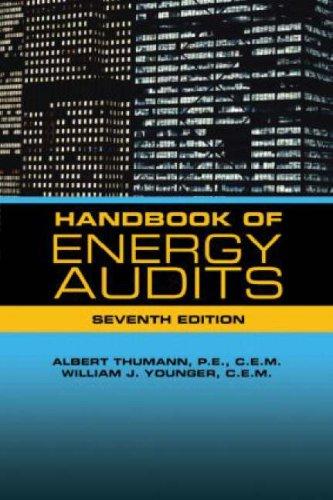I will upvote. please help

The income tax rate is 25%. The company had the following differences between GMMP basis and tax basis income. - For GAAP purposes, installment sales receivable is 530,000 on December 31 of Year 1 . On the tax return, 510,000 will be recognized each year, kear 2 through Year 4 , as cash is collected. - For GAAP purposes, warranty expenses of $4,000 are accrued in Year 1. On the tax return, $1,000 will be deducted each year, Year 1 through Year 4 as expenditures are made related to warranties. The company also recorded interest revenue of $1,250 each year on municipal bonds, which is not taxable. Required a. Prepare schedules to compute the deferred tax balances on December 31 of Year 1 , Year 2, Year 3, and Year 4. -Note: Do not use negative signs with your answers. b. Compute the increase to income tax payable on December 31 of Year 1, Year 2, Year 3, and Year 4. -Note: Round each amount to the nearest whole dollar, Use the rounded amounts for later calculations. c. Prepare the journal entries to record income tax expense for Year 1, Year 2, Year 3, and Year 4. -Note: If a line in a journal entry isn't required for the transaction, select "N/A" as the account names and leave the Dr. and Cr. answers blank (xerol. -Note: Round each amount to the nearest whole dollar. d. Show (1) income tax expense (benefid on the Year 1, year 2 year 3 , and year 4 income satements and (1) net deferred tax anset (patiby and * Note: Do not use necative sigrs with your answers. - Note: Round each amount to the nearest whole doliar. \begin{tabular}{|l|lr|} \hline \multicolumn{1}{|c|}{ Balance Sheet } & Dec. 31, Year 3 \\ \hline Current liabilities & & \\ \hline & $ & 0 \\ \hline & $ & 0 \\ \hline \end{tabular} \begin{tabular}{|l|ll|} \hline \multicolumn{2}{|c|}{ Partial Income Statement } \\ \hline For the year ended December 31, Year 4 \\ \hline Income before income taxes & $ & 0 \\ \hline Net income & $ & 0 \\ \hline \end{tabular} \begin{tabular}{|l|ll|} \hline Financial Statement Disclosure & \multicolumn{2}{|c|}{ Year 4} \\ \hline Current tax expense & $ & 0 \\ & $ & 0 \\ \cline { 1 - 3 } Total income tax expense & $ & 0 \\ \hline \end{tabular} \begin{tabular}{|l|lr|} \hline \multicolumn{1}{|c|}{ Balance Sheet } & Dec. 31, Year 4 \\ \hline Current liabilities & & \\ \hline & $ & 0 \\ \hline & $ & 0 \\ \hline \end{tabular} The income tax rate is 25%. The company had the following differences between GMMP basis and tax basis income. - For GAAP purposes, installment sales receivable is 530,000 on December 31 of Year 1 . On the tax return, 510,000 will be recognized each year, kear 2 through Year 4 , as cash is collected. - For GAAP purposes, warranty expenses of $4,000 are accrued in Year 1. On the tax return, $1,000 will be deducted each year, Year 1 through Year 4 as expenditures are made related to warranties. The company also recorded interest revenue of $1,250 each year on municipal bonds, which is not taxable. Required a. Prepare schedules to compute the deferred tax balances on December 31 of Year 1 , Year 2, Year 3, and Year 4. -Note: Do not use negative signs with your answers. b. Compute the increase to income tax payable on December 31 of Year 1, Year 2, Year 3, and Year 4. -Note: Round each amount to the nearest whole dollar, Use the rounded amounts for later calculations. c. Prepare the journal entries to record income tax expense for Year 1, Year 2, Year 3, and Year 4. -Note: If a line in a journal entry isn't required for the transaction, select "N/A" as the account names and leave the Dr. and Cr. answers blank (xerol. -Note: Round each amount to the nearest whole dollar. d. Show (1) income tax expense (benefid on the Year 1, year 2 year 3 , and year 4 income satements and (1) net deferred tax anset (patiby and * Note: Do not use necative sigrs with your answers. - Note: Round each amount to the nearest whole doliar. \begin{tabular}{|l|lr|} \hline \multicolumn{1}{|c|}{ Balance Sheet } & Dec. 31, Year 3 \\ \hline Current liabilities & & \\ \hline & $ & 0 \\ \hline & $ & 0 \\ \hline \end{tabular} \begin{tabular}{|l|ll|} \hline \multicolumn{2}{|c|}{ Partial Income Statement } \\ \hline For the year ended December 31, Year 4 \\ \hline Income before income taxes & $ & 0 \\ \hline Net income & $ & 0 \\ \hline \end{tabular} \begin{tabular}{|l|ll|} \hline Financial Statement Disclosure & \multicolumn{2}{|c|}{ Year 4} \\ \hline Current tax expense & $ & 0 \\ & $ & 0 \\ \cline { 1 - 3 } Total income tax expense & $ & 0 \\ \hline \end{tabular} \begin{tabular}{|l|lr|} \hline \multicolumn{1}{|c|}{ Balance Sheet } & Dec. 31, Year 4 \\ \hline Current liabilities & & \\ \hline & $ & 0 \\ \hline & $ & 0 \\ \hline \end{tabular}










